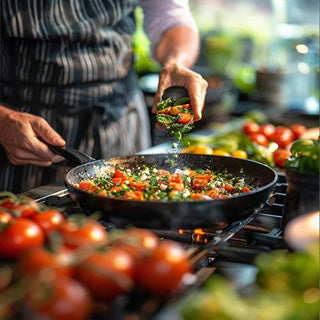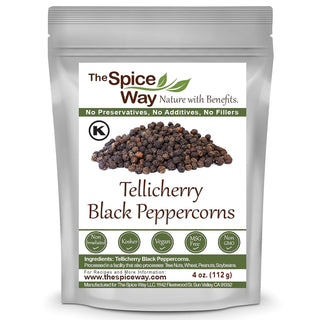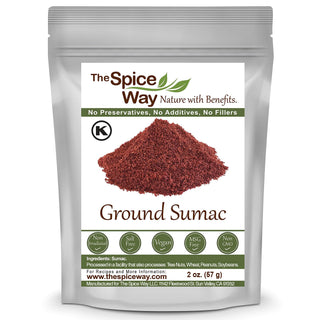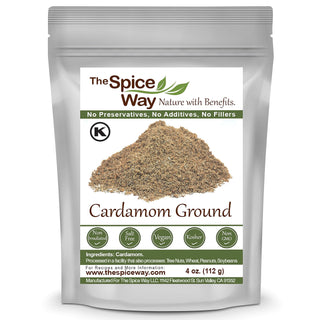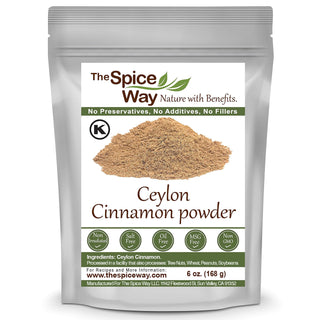If you’ve ever sprinkled a ruby-red powder over a salad and tasted a gentle tang without the sharpness of lemon, you’ve likely met Sumac spice.
This spice has been treasured for centuries, not just for its vivid color, but for the bright, tart, and earthy flavor it brings to food.
In this guide, you’ll learn exactly what sumac is, where it comes from, how it tastes, and how to use it in your cooking — whether you’re making classic Middle Eastern dishes or experimenting with modern recipes.
What Is Sumac Spice Made From?
Sumac spice is made by drying and grinding the berries of the Rhus coriaria plant, a wild shrub native to parts of the Middle East and Mediterranean.
The berries ripen to a deep crimson before harvest, then are sun-dried and ground into a coarse-textured powder.
Attributes of sumac:
-
Color: Deep red to reddish-purple
-
Flavor: Tangy, lemon-like acidity with subtle fruity notes
-
Texture: Coarse powder that clings well to food
-
Aroma: Fresh, slightly sour, with a hint of earthiness
What Does Sumac Taste Like?
Sumac tastes tangy and citrusy with a softer acidity than lemon or vinegar.
It’s bright but not overpowering, adding a round, balanced sourness. Beneath the tang, there’s a mild fruitiness and a grounding earthiness that gives dishes more depth.
Why cooks love the flavor:
-
Lifts heavy or rich dishes without dominating
-
Blends well with herbs and other spices
-
Provides visual contrast with its vibrant color
How Is Sumac Used in Cooking?
Sumac versatility is one reason it’s considered a pantry essential in many kitchens. It can be used as a finishing spice, a marinade component, or a key ingredient in blends.
1. As a Finishing Touch
Sprinkle sumac over dishes right before serving for color and brightness.
Examples:
-
Grilled lamb skewers
-
Roasted vegetables
-
Flatbreads fresh from the oven
2. In Spice Blends
Sumac is a signature component of za’atar, a Middle Eastern blend of sumac, thyme, sesame seeds, and salt.
Common uses of za’atar:
-
Sprinkled over hummus or labneh
-
Mixed with olive oil as a bread dip
-
Seasoning for roast chicken or vegetables
3. In Marinades
Combine sumac with olive oil, garlic, and herbs to marinate chicken, fish, or beef. The acidity helps balance the richness of the protein.
Proportion tip: Use 1–2 teaspoons per pound of protein for balanced flavor.
4. In Salads
Sumac is essential in fattoush, a Levantine bread salad made with toasted pita, fresh vegetables, and a lemony-sumac dressing. It also works in simple tomato-onion salads for a refreshing edge.
5. In Rice and Grain Dishes
A pinch of sumac stirred into cooked rice or quinoa adds subtle tang and a pop of color. Try mixing it into herbed pilafs or as a garnish for lentil salads.
How to Store Sumac for Freshness
Store sumac in an airtight container, in a cool, dark cupboard away from direct sunlight and moisture.
Shelf life: Up to 12 months before the flavor and color start to fade.
Tip: Buy sumac in smaller quantities if you use it occasionally — freshness matters for flavor impact.
Where to Buy Sumac
You can find sumac at:
-
Middle Eastern and Mediterranean markets
-
Specialty spice shops
-
Online spice retailers
Buying tip: Look for pure ground sumac without added salt or fillers — the label should list sumac as the only ingredient.
Historical Significance of Sumac
Sumac spice has been used for centuries across different regions:
-
Ancient Rome: Used as a souring agent before lemons were common in Europe
-
Persian kitchens: A staple seasoning for grilled meats and rice dishes
-
Ottoman Empire: Featured in both royal feasts and everyday meals
Its long culinary history is matched by its role as a trade spice, carried along ancient spice routes linking Asia, Africa, and Europe.
How Does Sumac Compare to Other Sour Ingredients?
While sumac provides acidity, it’s not a one-to-one match for other tangy ingredients.
|
Ingredient |
Acidity Level |
Flavor Notes |
Best Use Cases |
|
Sumac |
Soft, rounded |
Fruity, earthy, tangy |
Meats, salads, grains, spice blends |
|
Lemon juice |
Sharp, bright |
Citrus, aromatic |
Dressings, fish, fresh salads |
|
Vinegar |
Strong, biting |
Depends on type |
Pickles, marinades, chutneys |
|
Tamarind |
Sweet-tart |
Tropical, caramel-like |
Curries, sauces, chutneys |
|
Amchoor powder |
Tangy, dry |
Unripe mango, slightly resinous |
Indian curries, chutneys, dry rubs |
Recipes Featuring Sumac
1. Sumac Roasted Vegetables
-
Toss cauliflower, carrots, and zucchini in olive oil, sumac, salt, and pepper.
-
Roast at 400°F until golden, about 25 minutes.
2. Sumac-Crusted Chicken
-
Mix breadcrumbs, sumac, parsley, and garlic powder.
-
Coat chicken breasts, bake at 375°F for 25 minutes.
3. Fattoush Salad
-
Combine chopped cucumbers, tomatoes, radishes, scallions, parsley, and toasted pita chips.
-
Dress with olive oil, lemon juice, sumac, and salt.
4. Sumac-Spiced Fries
-
Sprinkle hot fries with sumac, smoked paprika, and sea salt. Serve with garlic yogurt dip.
5. Herb and Sumac Rice
-
Stir sumac and fresh dill into warm basmati rice before serving.
Using Sumac in Global Cuisines
Middle Eastern cuisine: Fattoush, musakhan (Palestinian roasted chicken with onions and sumac), grilled kebabs.
Mediterranean cuisine: Greek mezze platters, seafood seasoning.
Turkish cuisine: Yogurt dips, lahmacun topping.
North African cuisine: Tagines, couscous seasoning.
Modern fusion: Sumac in cocktails, desserts, and sauces for unexpected depth.
Sumac Beyond the Kitchen
-
Natural dye: The deep pigment has been used in textiles historically.
-
Table garnish: For plating and visual appeal at events or restaurants.
PAA Quick Answers
What is sumac spice used for?
Sumac spice is used to add a tangy, citrus-like flavor to meats, salads, vegetables, rice, and spice blends like za’atar.
Does sumac taste like lemon?
Sumac is tangy like lemon but with softer acidity and mild fruitiness.
What foods pair best with sumac?
Grilled meats, roasted vegetables, salads, legumes, and yogurt-based dips pair well with sumac.
Final Takeaway
Sumac’s vivid color and tangy flavor make it a standout ingredient for both traditional and modern cooking.
From seasoning kebabs to lifting a simple salad, it’s a spice that works as both a flavor enhancer and a visual highlight.
When you reach for sumac, you’re tapping into centuries of food tradition — and adding something bold, beautiful, and balanced to your plate.


